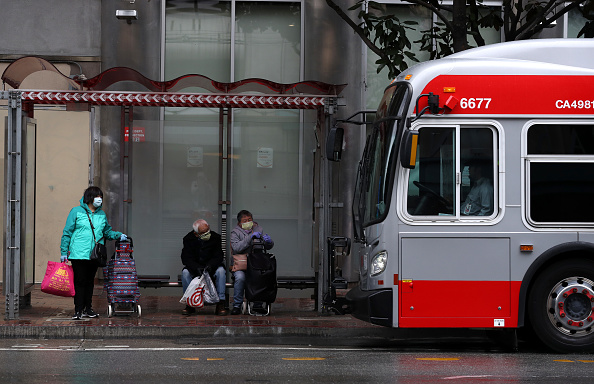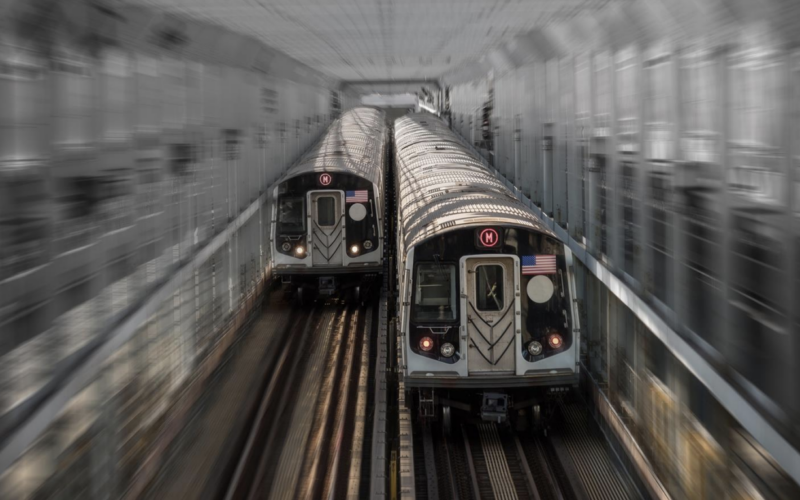
Suk-Yee Wong’s commute has never been easy. Long before dawn, she leaves her house in Middle Village, Queens, where she lives with her husband and two children, and takes a bus and two subways to her job as a pharmacist at NYU Langone Orthopedic Hospital on the East Side of Manhattan.
With COVID-19 forcing service reductions at the MTA, her typical 90-minute commute has become considerably longer and far less reliable. She wakes up half an hour earlier to get to her shift on time.
Tough as this new schedule has been, through her connection to New York’s Riders Alliance, Wong knows the transit situation could get much worse. The MTA expects to exhaust operating assistance remaining from the CARES Act—a federal emergency measure enacted in March—by the end of July. Severe and devastating service cuts are on the horizon.
Wong is not alone. She is one of 2.8 million Americans classified as essential workers who usually commute on transit. Many of her patients are lower-income riders who rely on transit service to access care. Further service cuts will have a devastating impact on their wellbeing.
The longer the COVID-19 pandemic grinds on, the more the inadequacy of the CARES Act and the old funding formulas it’s based on becomes apparent. As CARES funding is depleted, millions of Americans face the prospect of being unable to reach work, school, medical care, and other daily necessities because transit agencies will be forced to cut service and raise fares. Black, brown, and low-income workers use transit the most, and they will be hardest hit in any austerity scenario.
The fiscal emergency for transit agencies is a “four-alarm fire”
COVID-19 has engulfed American transit in an unprecedented fiscal crisis. Revenue from fares and dedicated taxes has plummeted during the pandemic, while local and state governments, facing budget emergencies of their own, withdraw financial support from transit.
At the same time, agencies are shouldering new expenses to keep their workers and riders safe—cleaning and disinfecting vehicles, supplying personal protective equipment, and providing extended leave to workers. Bay Area Rapid Transit’s newly adopted budget includes $44 million in COVID-19-related expenses for fiscal year 2021, for instance.
The estimated financial impact of COVID-19 on all U.S. transit agencies could be more than $40 billion through April 2021, according to a TransitCenter analysis. Filling the shortfalls for all transit agencies will require another $21.75 billion in addition to CARES Act funding. Agency leaders now warn of a “four-alarm fire” as they prepare to scale back service and cut capital investments to make ends meet.
- New York’s MTA has floated the possibility of a reduction in workforce, fare and toll increases, service reductions, and long-term deficit financing. Implementation of the agency’s recently-adopted $54.8 billion capital program is now in doubt.
- Faced with a staggering ridership decline and a projected $568 million revenue loss over four years, San Francisco’s MUNI may permanently eliminate 40 bus lines if the city cannot find a new revenue source.
- Seattle’s King County Metro is planning service reductions and delaying the construction of new transit lines.
- Denver’s RTD was already planning a service cut of 8 percent in the midst of a driver shortage, falling ridership, and delays to major rail projects. Now because of the pandemic, agency leaders have warned those cuts will likely be much worse.
Flawed federal transit funding formulas
The $25 billion for transit in the CARES Act, which passed in March, bought agencies in major cities a few months. In a departure from typical federal transportation grants, transit agencies were given the flexibility to spend CARES funding on operations, not just capital costs, and without the requirement of a local match. This was critical and enabled agencies to prevent long-term cuts and layoffs in the spring and summer.
But CARES funding was not sufficient to address the scale of the transit crisis, nor was it targeted well. The funding formulas in the legislation did not fully account for the ridership large agencies carry or the acute impact of COVID-19 in specific metro regions.
The bulk of CARES funding—$20.9 billion—was distributed to metro regions with populations greater than 200,000, divided up according to formulas established in previous federal law. Those formulas were written to give agencies predictable funding streams, primarily for maintenance, and are determined based on factors like how much bus service an agency operated last year, regional population, and population density.
That approach was poorly suited to address the current crisis. For instance, New York’s MTA received 15 percent of transit funding from the stimulus despite carrying 38 percent of all transit trips in the country. Instead of a disaster relief model, targeting assistance according to the specific impacts in affected areas, the CARES Act response to transit was grounded in outmoded equations.
As a result, CARES Act funding is expected to last about half as long for the nation’s largest transit systems as the average U.S. system, according to TransitCenter’s analysis.
- For the 10 U.S. regions with the most transit ridership, TransitCenter estimates that CARES Act funds will cover agency shortfalls for an average of 3.4 to 6.3 months as of July 2020. Funding may last less than half a year in the Bay Area, Los Angeles, Boston, Washington, D.C., and Philadelphia.
- After taking into account funding from the CARES Act, agencies in the San Francisco Bay Area project $1.3 billion in lost revenue through 2021, New York’s MTA $8.9 billion, and Seattle’s Sound Transit $628.6 million.
- A follow-up relief bill that has passed the House (the HEROES Act) would cover less than a year’s worth of the expected deficit in New York and Seattle, and possibly Los Angeles, the Bay Area, and Boston. It would also leave mid-sized transit agencies in cities like Denver, Minneapolis-St. Paul, and Charlotte to fight over $4 billion in application-based grant program money.
The inadequacy of the federal emergency response for transit agencies does not bode well for Suk-Yee Wong, her patients at NYU Langone, millions of essential workers who rely on transit, the general welfare of American cities, or the nation as a whole.
Unable to bridge the gap until the COVID-19 pandemic recedes and local revenue streams return to typical levels, transit agencies are now confronting a fiscal disaster that will compel permanent lay-offs and drastic service cuts.
If this scenario is allowed to pass, millions of transit riders will be stranded with worse access to jobs, education, and medical care—and the burden will fall disproportionately on Black and brown Americans. The economic strength of cities will decline as urban mobility constricts. And the country’s recovery from the coronavirus, which depends on healthy cities, will be in jeopardy.
 Surmounting the Fiscal Cliff: Identifying Stable Funding Solutions for Public Transportation Systems
Surmounting the Fiscal Cliff: Identifying Stable Funding Solutions for Public Transportation Systems
Urban Institute's latest report, "Surmounting the Fiscal Cliff," seeks to understand why transit agencies—unlike many other public services—continuously face fiscal instability.
Read More The Gas Tax’s Looming Insolvency is a Big Opportunity to Rethink How We Fund Transit
The Gas Tax’s Looming Insolvency is a Big Opportunity to Rethink How We Fund Transit
Two new reports investigate funding alternatives.
Read More